A large number of people do not even realize that such a spice as vanilla, which has a unique sweetish smell, is nothing more than vanilla orchid seeds. The genus of Vanilla orchids is quite extensive and it combines about 100 species of various plants, while only 2 species produce the very same vanilla. This plant comes from Central America, but it is grown in a huge number of countries and not only for spice, but also as a beautiful flower.
In indoor conditions, this kind of orchid does not bear fruit, but at the same time it blooms magnificently. So, its delicate flowers can be painted yellow, snow-white or light green. The flower stays on the plant for only 1 day. But despite this, flowering can last for several weeks, since a lot of flowers are formed. During flowering, a very delicate aroma emanates from such a plant and this is a kind of reward for the florist for careful care. Vanilla orchid has a clear difference from other members of the orchid family, since it is a liana and in natural habitat grows up to 30 meters long. However, such a plant also has common features with most orchids, namely, it has many aerial roots, as well as dense leaves of a dark green color.
When grown in indoor conditions, such a vine does not grow much, and also do not forget that, if necessary, you can carry out systematic pruning. Pruning has a positive effect on the condition of this plant. So, it rejuvenates and the intensive growth of lateral shoots is activated. As a result, the specimen becomes more magnificent and effective.
This is a fairly fast growing plant that needs reliable support, for the manufacture of which it is recommended to use coconut fiber. If you properly care for a very small cuttings, then already in the third year of its life it becomes a full-fledged plant, capable of delighting others with its flowers. For 12 months, such a plant grows on average 50-100 centimeters in length, and do not forget that pruning will help keep the rapid growth of this vine under control.
Content
Vanilla orchid care at home
Growing this kind of orchid is not as difficult as it might seem. The main thing is to remember that for the normal development and growth of the "vanilla orchid" special conditions in the room are needed, which are very similar to those that are present in the natural habitat of such a vine.And it grows in a tropical forest, where it is almost always warm and damp.
Temperature regime
The orchid will feel best at temperatures from 25 to 30 degrees, and throughout the year. It is worth remembering that the minimum permissible temperature in the room where the plant is located is 18–20 degrees.
Air humidity
Needs a fairly high humidity, which should be kept at around 80-90 percent. To do this, the vanilla must be watered systematically, and very often moistened with a sprayer. Use lukewarm soft water for this. The frequency of watering and humidification depends on the room temperature. So, the cooler it is in the room, the less often these procedures are carried out and vice versa. It should be remembered that overdrying the substrate should not be allowed. Experts also advise such a plant to regularly arrange a shower under running slightly warm water, while its leaves must be handled extremely carefully.
Illumination
This is a light-loving plant, but only diffused light is needed. The same applies to most other genera of orchids, which is definitely worth knowing for an inexperienced orchidist. So, many gardeners have the opinion that plants of the orchid family prefer shaded places, but at the same time, it is precisely the insufficient amount of light that becomes a frequent reason for the lack of flowering. Vanilla needs bright, but diffused lighting throughout the day.
Earth mixture
To grow this liana, an earth mixture is used, which is somewhat different in composition from that used for planting epiphytic plants. So, to create this kind of soil mixture, it is necessary to combine the bark of a coniferous tree, fern roots, sphagnum moss, charcoal, and also add previously disinfected garden soil. The finished soil mixture should be air and water permeable, as well as loose and light.
Transplant features
The transplant is carried out 1 time in 2 or 3 years. This procedure is necessary for the plant whose roots have ceased to fit in the container. It is worth remembering that the growth of this orchid may become slower because of this. Experts advise replanting the plant in the spring. To do this, you need to carefully pull it out of the old pot, while very carefully handling the roots so as not to damage them. In the event that some roots do break, they should be sprinkled with crushed charcoal to prevent the formation of rot.
Reproduction methods
As a rule, propagates by cuttings. The rooting of cuttings with 1 or more air roots takes place most quickly. In order to make rooting faster, you can use root formation stimulants, for example, heteroauxin. After the vine is planted in the soil mixture, it must be covered from above with a plastic bag cap. Do not forget to systematically ventilate the plant and remember that during this time the substrate should be slightly damp all the time. After the vine begins to grow again, the bag must be removed completely.
Such an orchid will generously reward the grower for his efforts with lovely flowers with a very pleasant aroma.

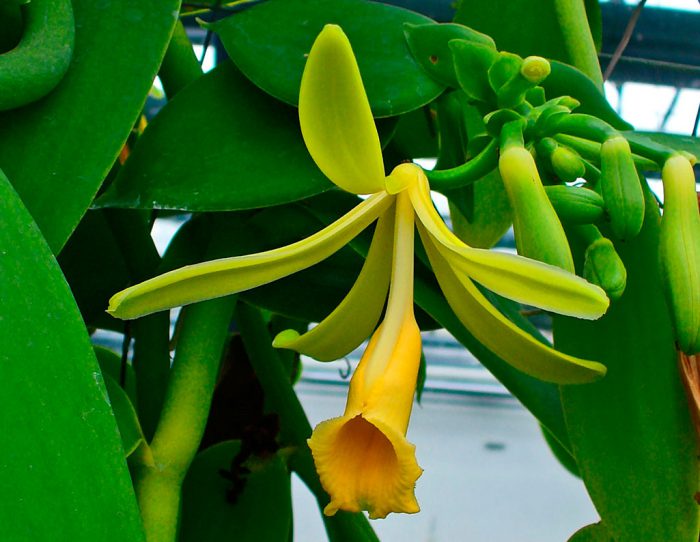
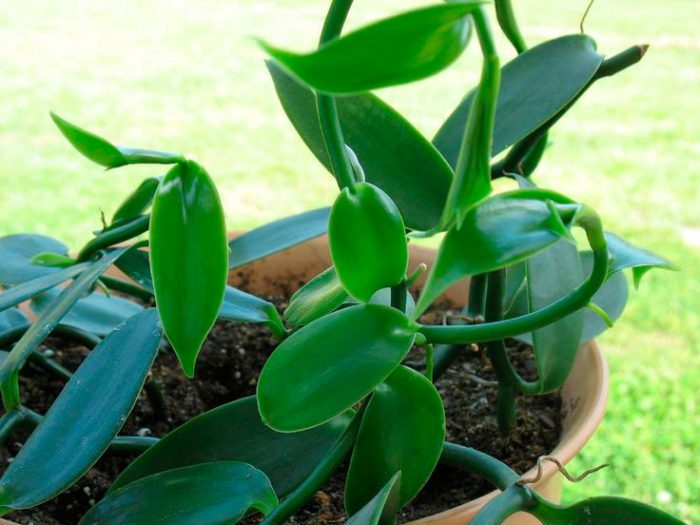

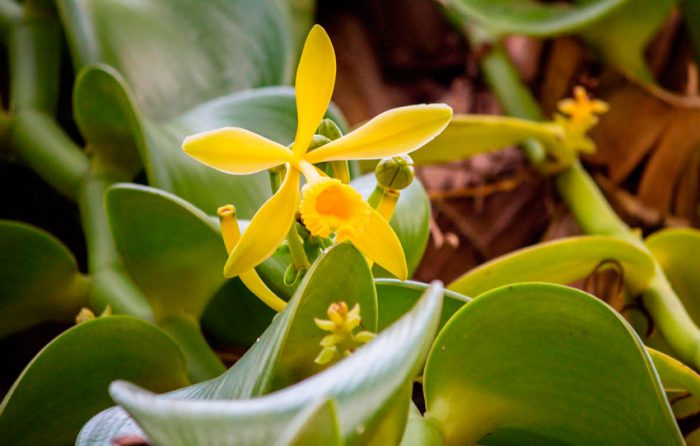
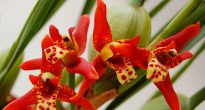



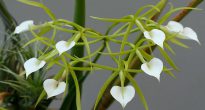





Interestingly, I did not even think that vanilla is a product made from orchids. A very informative article. It turns out that there are so many interesting and unexpected things in the world.
It’s interesting that this spice is the seeds of the vanilla orchid.
If the cuttings have lost their aerial roots, but they have been courageously holding on for several months now, what to do in this case?
I ordered it on the Internet and ... today I will get it and happily and anxiously which one will come and how we will cope, thanks for your advice and information
It is a pity that the flower of such an orchid lasts only a day. Very beautiful.